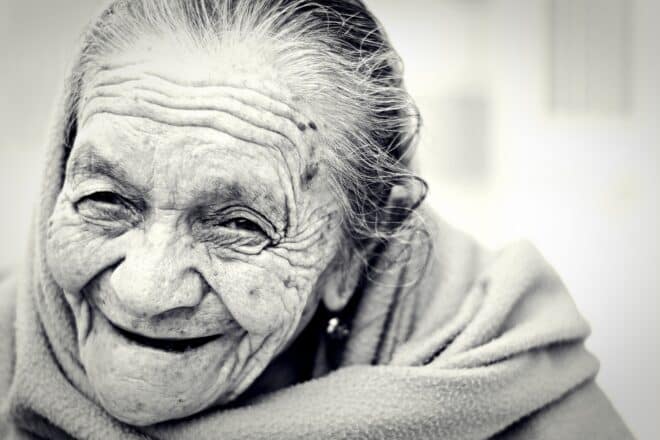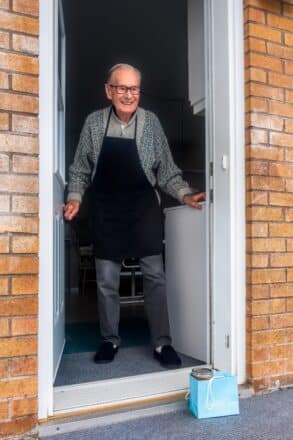The article “home modifications and Professional Help Enhancing Elderly Safety” provides substantial detail on enhancing the safety of elderly individuals within their homes. It covers the often-overlooked hazards for the aged, such as uneven floors or insufficient lighting, and presents a range of effective solutions from technological aids like GPS trackers and cell phones to physical modifications within the home environment. The article places a strong emphasis on seeking specialized help, encouraging the engagement of occupational therapists to pinpoint essential changes and anticipate future requirements. Discussing both affordable alterations and larger-scale renovations, the piece highlights key modifications like better lighting, pull bars, wheelchair-friendly spaces, slip-resistant flooring, and smarter security options, all of which aim to optimize comfort and safety for the elderly. Every recommendation is made with a focus on the ultimate goal – helping seniors maintain their mobility and independence while living securely within their homes.

Hidden Home Hazards for the Elderly
Within the comfort of their home, elderly people often encounter hidden risks that can impact their mobility and ability to carry out daily routine activities. Some of these dangers can be attributed to the state of the home infrastructure including uneven or slippery floors, insufficient lighting, and excessive clutter.
Understanding the dangers of uneven or slippery floors
Uneven or slippery floors pose a significant threat to the elderly, enhancing the risk of falls, fractures, and other physical injuries. Slippery surfaces, whether from polished timber floors to wet bathroom tiles, may be challenging to navigate and can lead to harmful accidents.
The impact of insufficient lighting on elderly safety
Sufficient lighting is a fundamental requirement for maintaining safety in the homes of the elderly. Inadequate lighting can complicate minor tasks, such as walking around the house at night or reading labels on medication bottles, turning them into potential hazards.
The risk of clutter affecting elderly mobility
Clutter can significantly affect the mobility of the elderly by creating physical obstructions, causing confusion and increased fatigue. Areas with excessive stuff can turn into a labyrinth, challenging to navigate without the risk of tripping over.
Technology Enhancements for Elderly Safety
Technology, specifically GPS trackers and mobile phones, has a significant role in increasing safety for the elderly. It is especially crucial for those with Alzheimer’s disease or dementia as it can help in their location tracking if they wander off.
Use of GPS trackers and cell phones for safety
GPS trackers and cell phones can be instrumental safety tools for elderly individuals. They offer an easy and convenient way for family members to track and monitor the location of their loved ones, ensuring their safety at all times.
The benefits of technology for those with Alzheimer’s disease or dementia
For those with Alzheimer’s or dementia, technological advancements can offer a form of safety net. Assistive devices and applications can aid in memory support, set alerts or reminders for medication and appointments, and support communication with healthcare providers and family members.
Home Modifications for Elderly Safety
Home modifications, from simple, low-cost changes to extensive renovations, can significantly enhance home safety and functionality for the elderly.
Simple and low-cost changes to enhance safety
Simple modifications such as installing handrails or improving lighting can substantially enhance safety. They are also economically friendly, offering a significant return on investment in terms of security and comfort.
The importance of extensive renovations for elderly homes
In some scenarios, it might be necessary to undertake extensive renovations to ensure higher levels of safety. These might include remodeling bathrooms to accommodate safety equipment or renovating kitchens to lower countertops, making them easily accessible.
Professional Assistance and Their Impact
Professional assistance, such as occupational therapists, contribute significantly to ensuring high levels of safety in the homes of the elderly through effective home modifications and future needs projections.
The role of occupational therapists in home modifications
Occupational therapists can play a vital part in identifying necessary home modifications that could aid in improving safety. They use their expert understanding of age-related changes to recommend modifications that enhance ease of mobility and decrease the risk of accidents within the home.
Projecting future needs through professional help
Planning for the future is an essential step towards enhancing elderly home safety. Professionals can assist in projecting future needs based on current health situations and anticipated health conditions, which can guide home modifications.

Low-cost Modifications and Their Benefits
Simple and low-cost home modifications, such as installing pull bars, increasing lighting, modifying faucets, and eliminating trip hazards, can significantly boost elderly home safety.
The importance of installing pull bars
Installing pull bars in crucial areas around the home can provide the necessary support for the elderly, especially in slippery areas like bathrooms. Bars can assist in transitioning from one posture to another, reducing the risk of abrupt falls.
Increasing lighting to improve visibility
Improving lighting, whether by adding more light fixtures or replacing current ones with brighter bulbs, can significantly enhance visibility. This change reduces risks associated with poor visibility such as stumbling or misjudging distances.
Faucet modifications and the elimination of trip hazards
Modifying faucets with easy-to-use handles can increase usability for the elderly. At the same time, trip hazards, such as loose rugs or power cords, should be removed or secured to prevent accidental falls.
Creating Wheelchair-Friendly Spaces
When considering elderly safety, attention should be given to wheelchair accessibility. This can involve clearing spaces, lowering countertops, installing grab bars, and adjusting the height of electrical switches.
Clearing spaces and adjusting countertops for wheelchair accessibility
Clearing spaces to create wide and accessible paths can greatly aid wheelchair navigation. Additionally, adjusting countertops to be wheelchair-friendly allows for easier access and use.
The significance of grab bars and appropriately placed electrical switches
Grab bars play a crucial role in enhancing mobility and independence for those using a wheelchair. Similarly, setting electrical switches at an accessible height can significantly improve comfort and safety for wheelchair users.

Enhancing Home Safety with Advanced Security Systems
Advanced security systems, like smart door locks and surveillance systems, can boost the safety of elderly individuals living alone.
Smart door locks to ensure elderly safety
Smart door locks offer enhanced safety by allowing controlled and monitored access to homes. They also minimize the risk of potential break-ins, ensuring a secure environment for seniors.
The role of surveillance systems in elderly home care
Surveillance systems can help monitor the daily activities of elderly individuals, keeping an eye out for any sudden falls or health emergencies. They provide peace of mind to family members knowing that their loved ones are safe.
Improving Home Functionality
Enhancing home safety goes hand in hand with improving home functionality. Installations like wheelchair ramps and first-floor amenities, push light switches, and eliminating cords can drastically enhance the safety and functionality of homes for the elderly.
The role of wheelchair ramps and first-floor amenities in enhancing safety
Wheelchair ramps can provide easy home access to those using wheelchairs or walkers, eliminating potential accidents caused by stairs. Similarly, having crucial amenities on the first floor minimizes the need for frequent stair use, decreasing the risk of falls.
Push light switches and eliminating cords for easier accessibility
Replacing traditional flip switches with push switches can ease operation for those with weakened hand strength. Furthermore, removing cords or securing them away can reduce tripping hazards considerably.
Preventing Trips and Falls
Making homes safer for the elderly involves steps like installing handrails on both indoor and outdoor stairs and ensuring safe item placements in entryways to avoid trips and falls.
Installing handrails on indoor and outdoor stairs
Handrails are a must-have on both indoor and outdoor stairs. They provide the necessary support for the elderly while climbing or descending steps and reduce the risk of falls significantly.
Making entryways safe through proper item placements
Safety at entryways is often neglected. A clutter-free entryway with proper item placement ensures secure balance for the elderly while entering or exiting homes. A designated space for each item reduces the chances of clutter accumulation.
Improvements for Mobility and Accessibility
Certain improvements can enhance the mobility and accessibility within homes for the elderly. These include wider doorways and slip-resistant flooring.
Wider doorways for those with mobility aids
For seniors using mobility aids like wheelchairs, wider doorways are essential. Not only do they provide room for easy passage, but they also reduce the incidence of accidental bumps and bruises.
Installing slip-resistant flooring to prevent falls
One significant modification to prevent common household falls is the installation of slip-resistant flooring. Slip-resistant options provide greater traction, reducing the likelihood of slips and falls, enhancing safety for the elderly.
